Rachel James, Associate Clinical Director, Paul Dugmore, Associate Dean, at the Tavistock and Portman NHS Foundation Trust (T&PFT), and Rachel Field, a parent who completed video-feedback intervention to promote positive parenting (VIPP), share how they worked together to co-produce an animation to promote VIPP to parents, carers, and professionals.
Download this implementation story.
VIPP, an evidence based intervention
Video-feedback intervention to promote positive parenting and sensitive discipline (VIPP-SD) is the first highly evidenced video-feedback intervention for parents/carers and was developed by world leading researchers at Leiden University in Holland (Juffer et al., 2008)[1]. VIPP is a way of working with families that focuses on attachment and the parent/carer-child relationship. The aim is to increase parental/carer sensitivity and attunement by enhancing their responses to their child and their knowledge of child development. VIPP has a solid evidence base for preventing or reducing behavioural problems in young children and has been shown, through randomized controlled trials, to be extremely effective with a range of different populations e.g. under 5’s, adoptive parents and childcare providers. VIPP is also recommended in the NICE Guidelines for Children’s Attachment[2] and is available for families with children aged between 6 months and 6 years old. VIPP-SD and VIPP for Family Placements (VIPP-FP) were brought to the UK via a partnership between the T&PFT and Leiden University. T&PFT and The Adolescent and Child Trust (TACT) then developed a partnership via a Department for Education grant to develop VIPP across London.
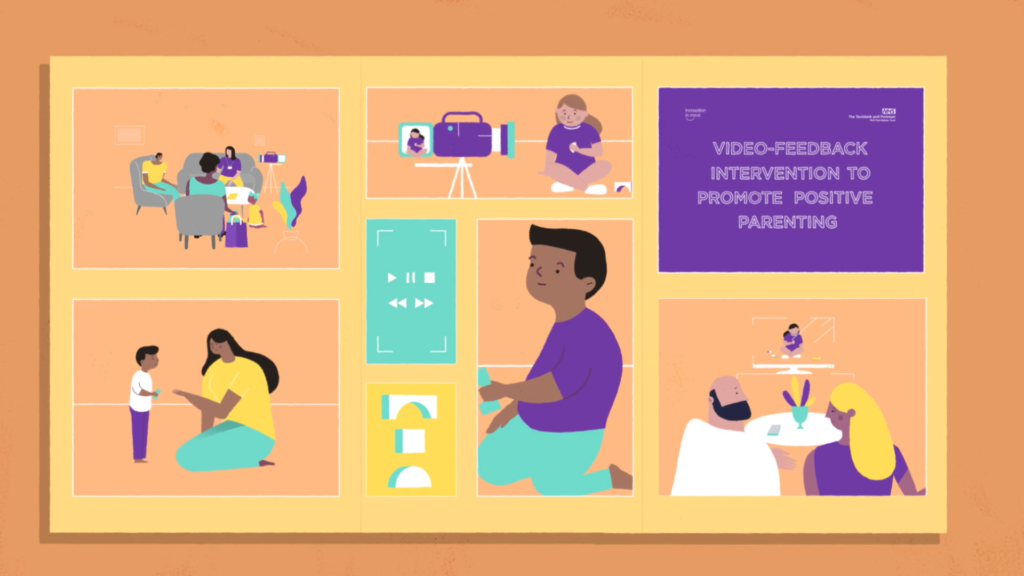
The intervention usually takes place in the family home, with up to 7 visits taking place 2 to 4 weeks apart. Each visit and lasts approximately 90 minutes. The practitioner films activities of the child and their parent/carer carrying out different activities together, such as playing together, reading a book, tidying up and having a meal. After the filming, the parent and the practitioner watch the recording from the previous visit and think together about what they see happening between the parent/carer and their child. This enables detailed observations and discussions to take place, alongside sharing knowledge of child development. This helps the parent/carer to identify their child’s signals and to see the world though their eyes, understanding them more clearly. The parent is also given tasks to try out between visits, such as playing together with their child and giving specific and/or increased compliments to promote positive development.
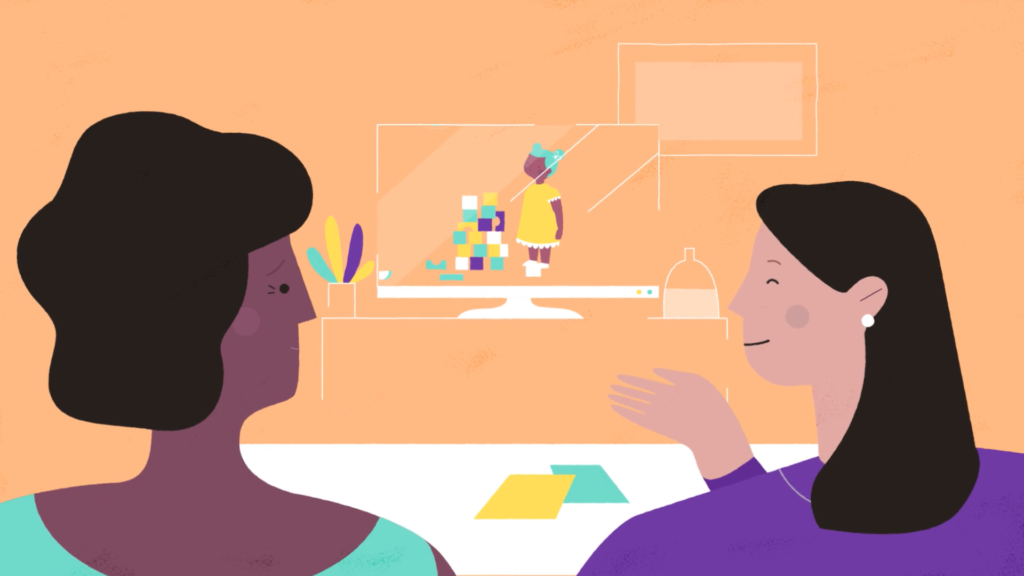
Families benefit more when they complete all the sessions and the expected outcomes from the intervention include:
- Improved relationship between the parent/carer and their child which generalises to other family members
- Improved child behaviour
- Improved confidence and skills in parenting.
Co-producing an animation
The T&PFT VIPP Unit were awarded funding from the by the Trust’s Quality and Patient Experience Team to co-produce an animation for VIPP with a parent who had experience of the intervention. They chose to develop their animation with Mummu, a London based animation production company who have a passion for provoking change through helping organisations share their stories, broadening the horizons of their audiences for the better. Rachel is a parent who received the intervention in 2016. As a result of experiencing significant improvement in her relationship with her child through VIPP, Rachel has become an advocate of the intervention and is highly motivated to promote the evidence-based intervention being available to parents and carers more widely. She was therefore keen to collaborate with the T&PFT VIPP Unit on the development of an animation to broaden the reach of VIPP and was committed to actively participate in the process from start to finish.
Q&A with Rachel Field, parent by experience
Please describe your experience of VIPP?
Rachel: We were offered VIPP via Camden Child and Adolescent Mental Health Services (CAMHS), having been referred by our GP and my daughter’s nursery. The story of the video is very much our story – our adopted daughter’s behavior was very disruptive to family life and we were finding it hard to cope. The intervention was hugely beneficial – life changing for us all – and I was keen to help the team bring the benefits we had experienced to more families, particularly as communications is one of my areas of expertise.
What was it like co-producing the VIPP animation?
Rachel: It was fun. Rachel and Paul work very collaboratively and were interested in my perspective as a parent, and as someone who had experienced the programme from the other side. Likewise, it was interesting to hear their views and experiences, and to see how the Mummu creatives translated our brief and script into the wonderful animation.
Were there any challenges?
Rachel: The film is designed to have broad appeal across class, race, age and other boundaries. Somehow the accessibly London accent we had briefed came out sounding like Cathy Beale from EastEnders. Fortunately, the talented voice-over professional managed to tone it down.
On a practical note, I never met Mummu during the whole process – the power of technology, and collaborative working practice meant that didn’t feel like a problem at all.
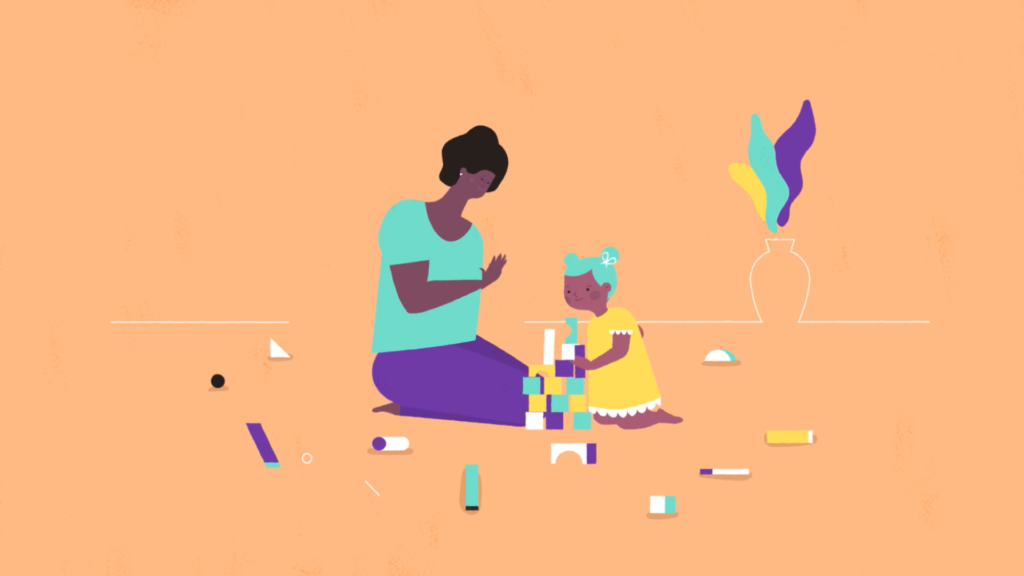
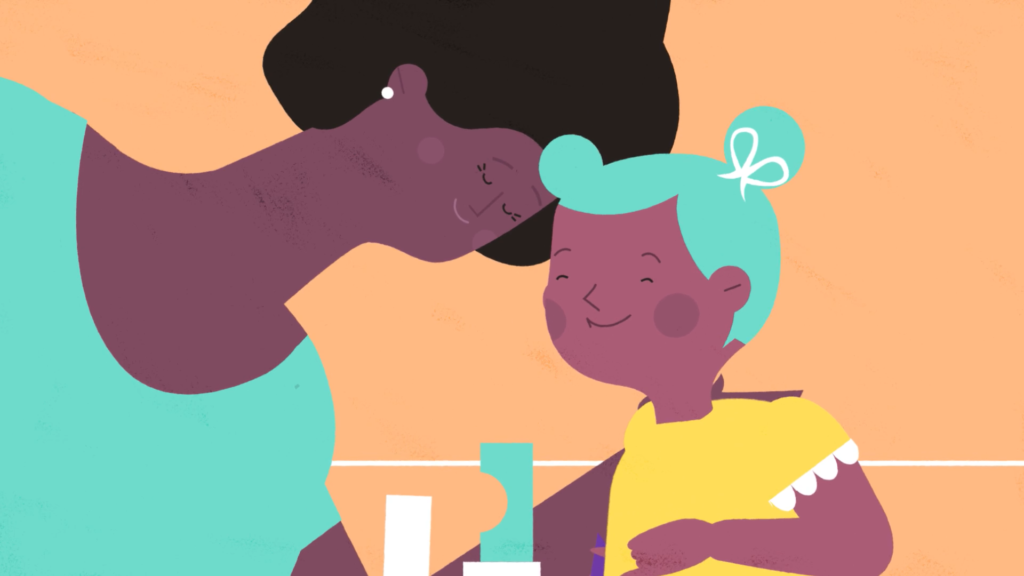
Q&A with the collaborators: The VIPP Unit and Mummu
Why did the T&PFT VIPP Unit choose to co-produce the animation?
The VIPP Unit: We know that service users are the experts on their experience on receiving services, therefore if we were to develop an animation that was going to promote the intervention to parents and carers, it was crucial to us that we would co-produce with parent or carers who had lived experience of the intervention. We can clearly describe the intervention from a professional perspective but would be concerned about the accessibility of the professional narrative to service users. We also saw it as an opportunity to build capacity in the broader children’s workforce and therefore wanted to ensure the animation would help professionals to understand the intervention.
How does co-producing the animation align with the THRIVE Framework for system change?
The VIPP Unit: VIPP, as an evidenced-based intervention would fall within the Getting Help needs based offer of the THRIVE Framework for system change (Wolpert et al., 2019) as it provides evidence based help and support with clear aims and expected outcomes. Outcomes informed practice is core to the delivery of the intervention with a range of goal based and outcome monitoring tools used to assess whether the aims are being achieved on an ongoing basis.
Co-producing the animation with Rachel enabled us to align the development of the animation with a number of core principles of the THRIVE Framework for system change, this includes: ensuring that the promotion of the intervention is based on meeting need, with shared decision making at the core to embed the voice of parents and carers in the promotion of the intervention to others. We wanted to develop the animation to enable evidence based help to be promoted to parents, carers and the universal children’s workforce. It was clearly important for us to do this in an accessible way, to reduce any stigma around the challenges of parenting and ensure early intervention to support good mental health and wellbeing for infants, young children and their parents or carers.
What was the animation company’s experience of the co-production?
Sam Atkin, Mummu: The VIPP animation was our first experience of collaborating with an NHS organisation and a service user. Mummu really enjoyed working as part of this team from initial concepts to final delivery. We presented our ideas to the rest of the collaborators, then after some round table brainstorming, a treatment for the animation was set. Mummu offered our expertise in charming illustrative design and storytelling, to help visualise and communicate the knowledge of the NHS experts and the first-hand experiences of parents. Receiving feedback during the process of the animation was important to make sure the messaging stayed on point and appealed to a wide ranging and diverse audience. This timely feedback from our collaborators, was constructive and detailed, helping to create an animation that is informative and engaging. We hope the animation will now serve its purpose and be very successful in educating the wider public and health care providers.
You can access the VIPP animation and find out more on the Tavistock and Portman website here or on the image below.
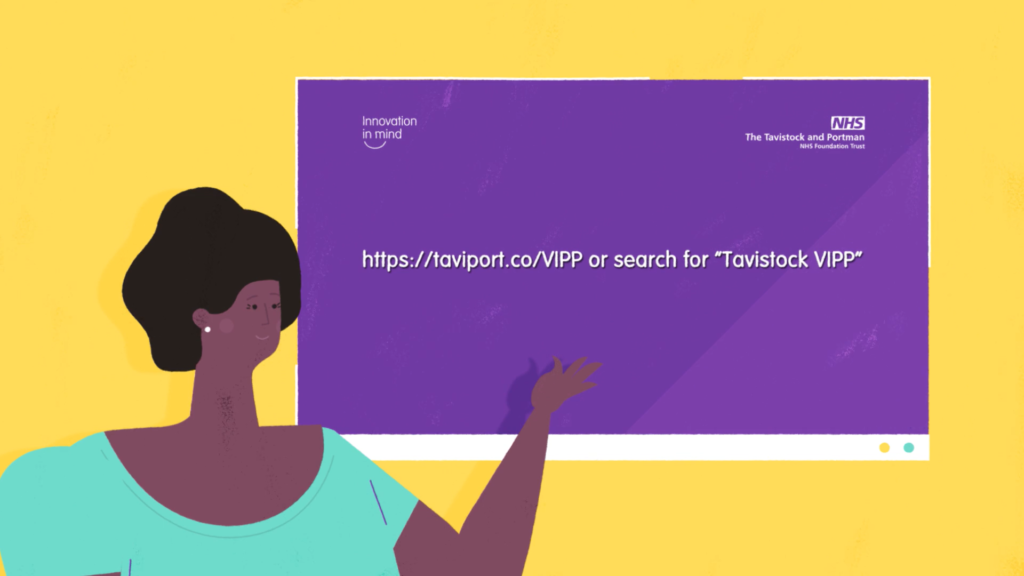
If you would like further information about VIPP, please contact Paul Dugmore at PDugmore@tavi-port.nhs.uk and Rachel James at RJames@tavi-port.nhs.uk.
If you would like more information about Mummu, please contact Sam Atkin, Creative Director and Executive Producer at sam@mummu.co.uk.
Edited by the National i-THRIVE Programme Team.

Written June 2019.
←Back to i-THRIVE Implementation Stories